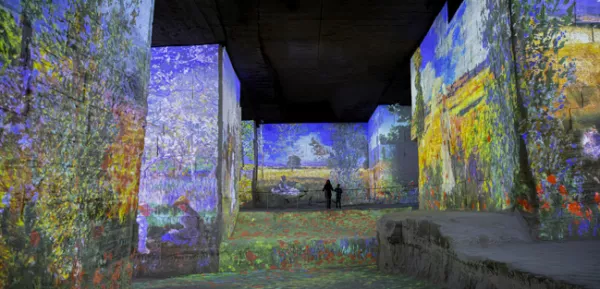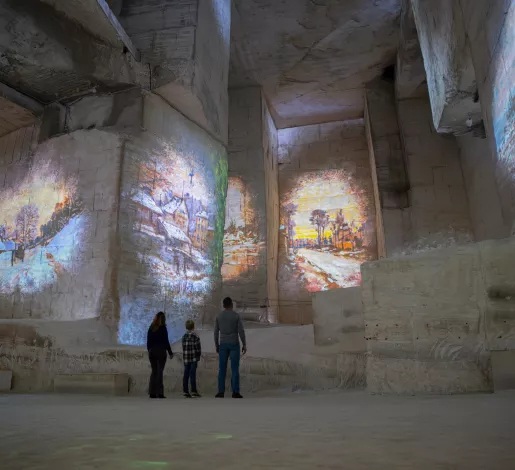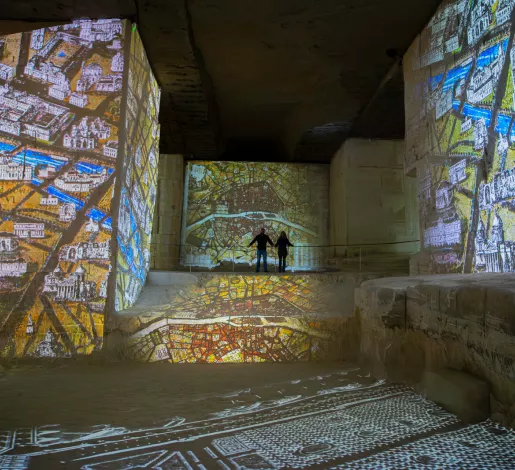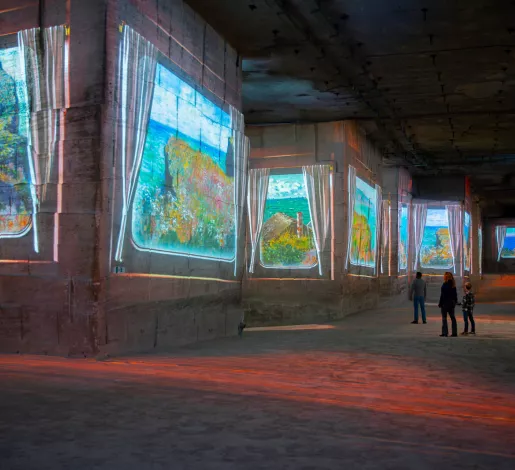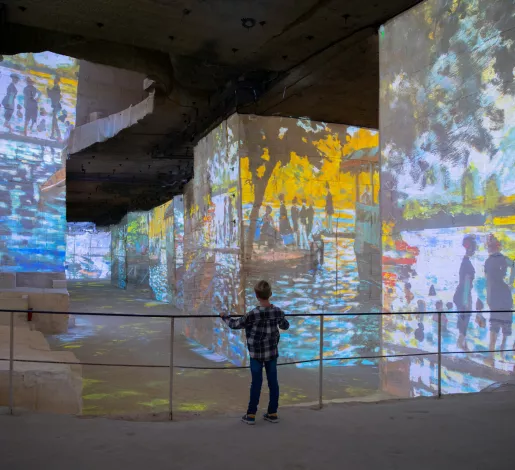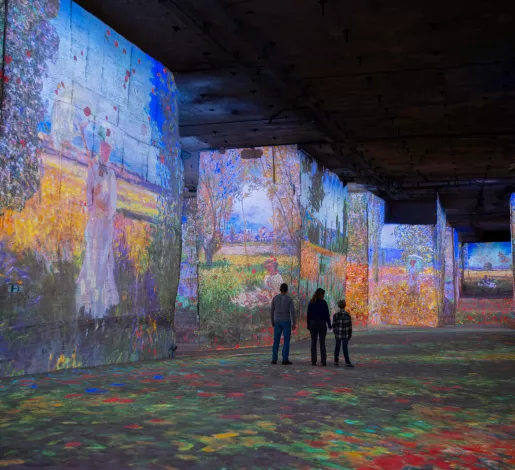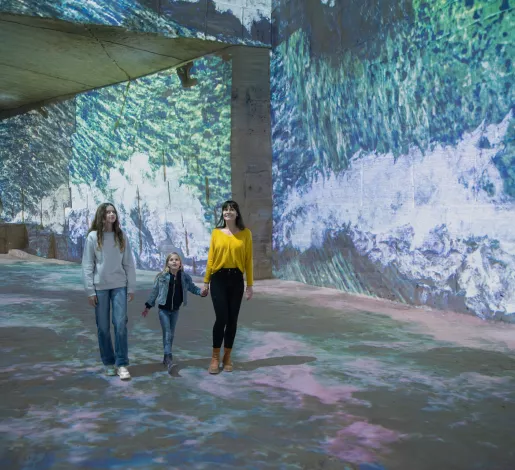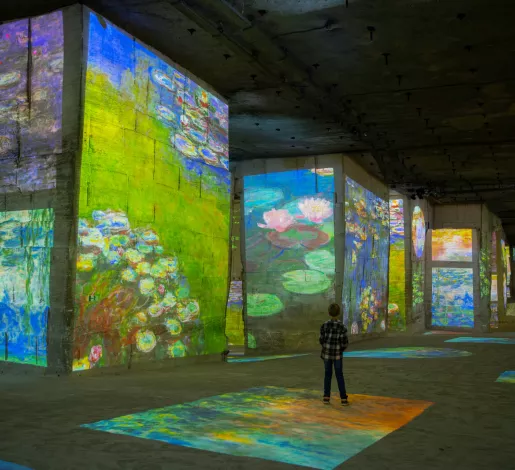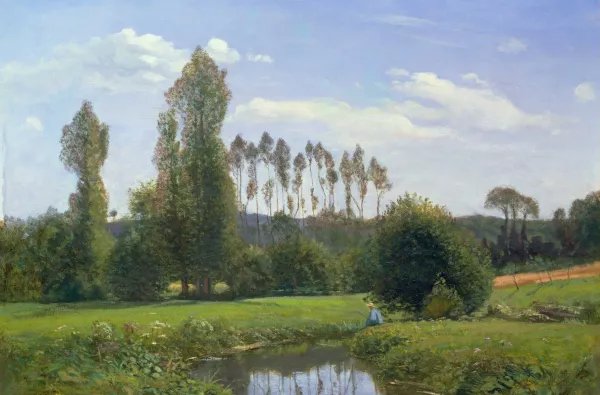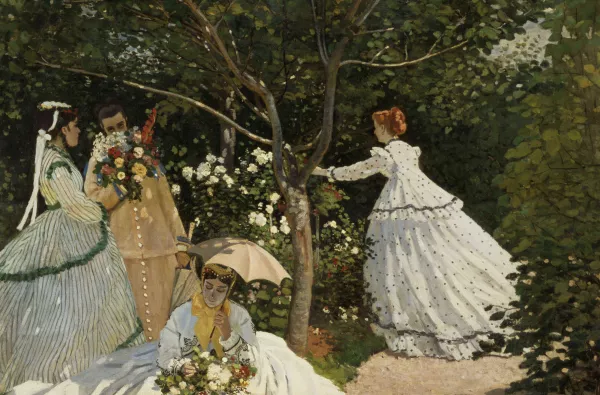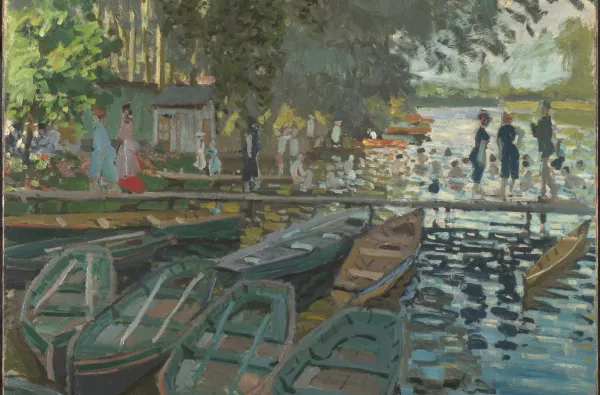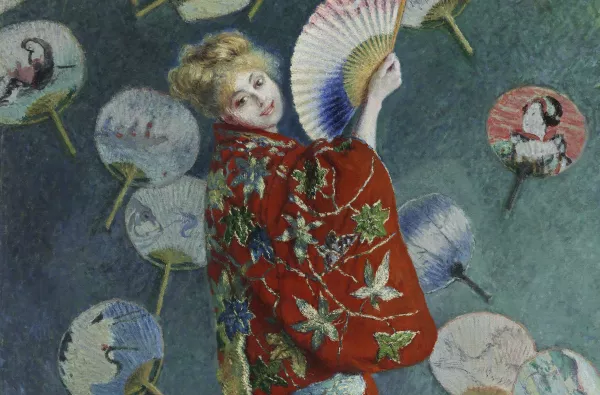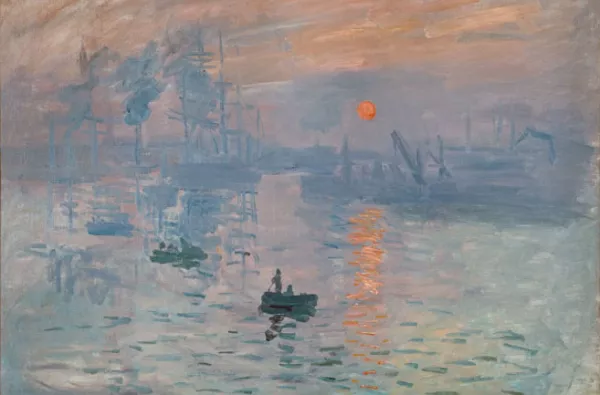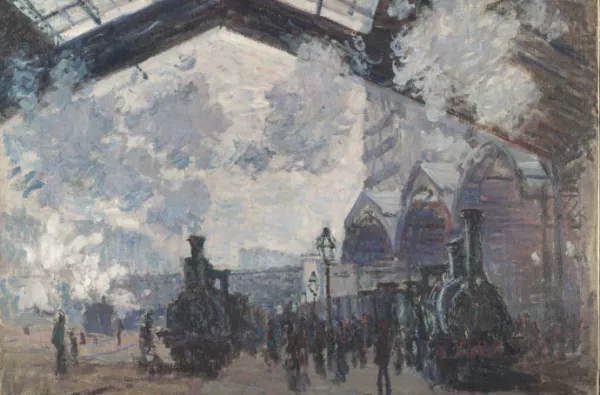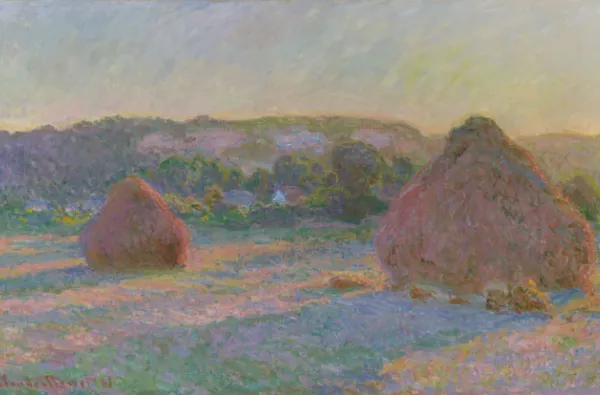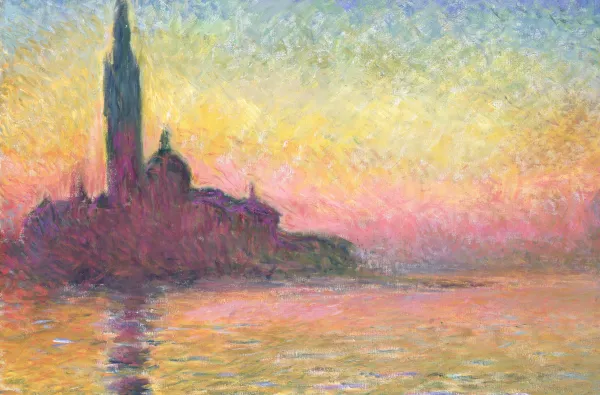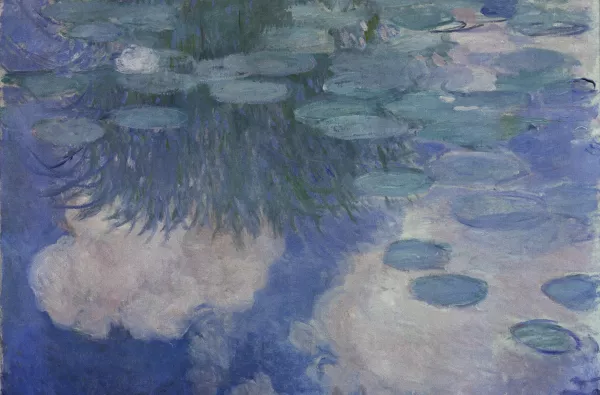Currently, there are two programs to discover (The Little Prince & Monet/Rousseau): check the broadcast days.
About the exhibition Monet, founder of impressionism
Claude Monet (1840-1926)
Key works
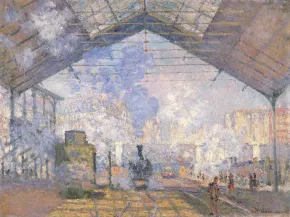
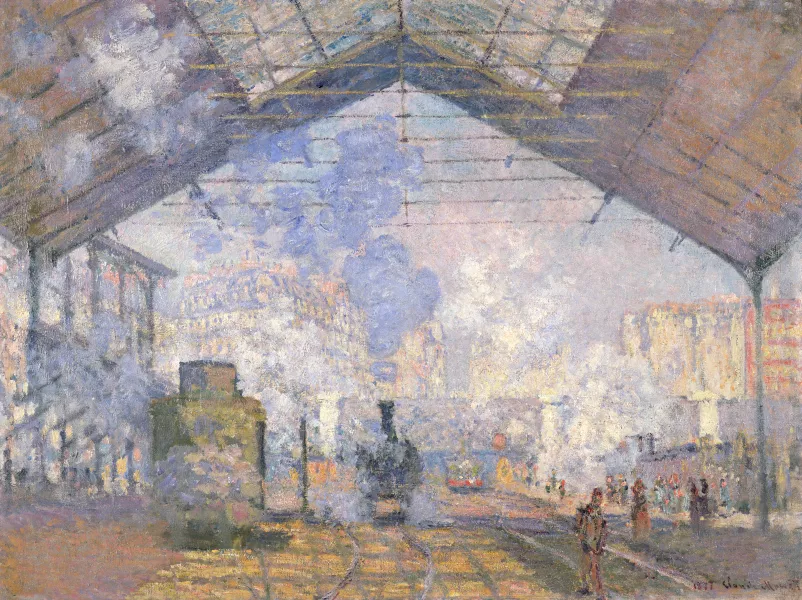
The Saint-Lazare Station
The young painter arrived in Paris in 1859, where modernization and sanitation work had already been underway since 1853. Baron Haussmann's vision was met with criticism from writers and artists alike. Monet was a painter of modernity, capturing the Parisian life of his time: the teeming crowds, the lively boulevards and the new industrial architecture. In January 1877, Monet obtained official permission to set up his easel in the Saint Lazare train station. From his work emerges a series of twelve canvases capturing the effervescence of this new district enveloped in steam.
The Saint-Lazare Station
Claude Monet , 1877 , oil on canvas , 75 x 105 cm , musée d’Orsay, Paris , © Bridgeman Images
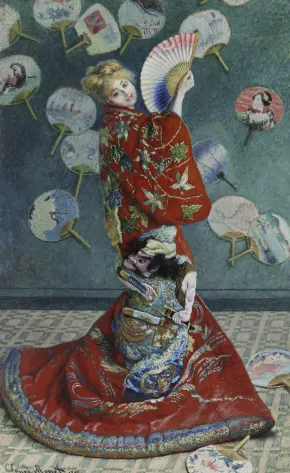
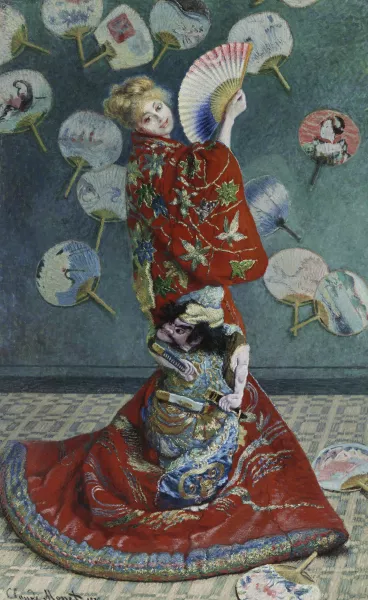
La Japonaise
Since the 17th century, Japan was living under a strict policy of international isolation known as sakoku, to keep out foreign merchants and Christian missionaries. In 1853, the Americans put an end to almost two centuries of isolation, and the following year, a trade treaty was signed. Japanese textiles, porcelain and other luxury goods arrived on the European market. Universal exhibitions gave the general public the chance to discover a culture that was completely foreign to them. The first Japanese collections were established: Zola, the Goncourt brothers, Cernuschi, Guimet, Degas and, of course, Claude Monet.
La Japonaise (Camille Monet in Japanese Costume)
Claude Monet , 1876 , oil on canvas , 232 x 142 cm , Museum of Fine Arts, Boston , Photograph 2025 © Museum of Fine Arts, Boston
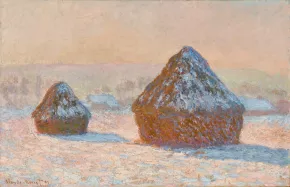
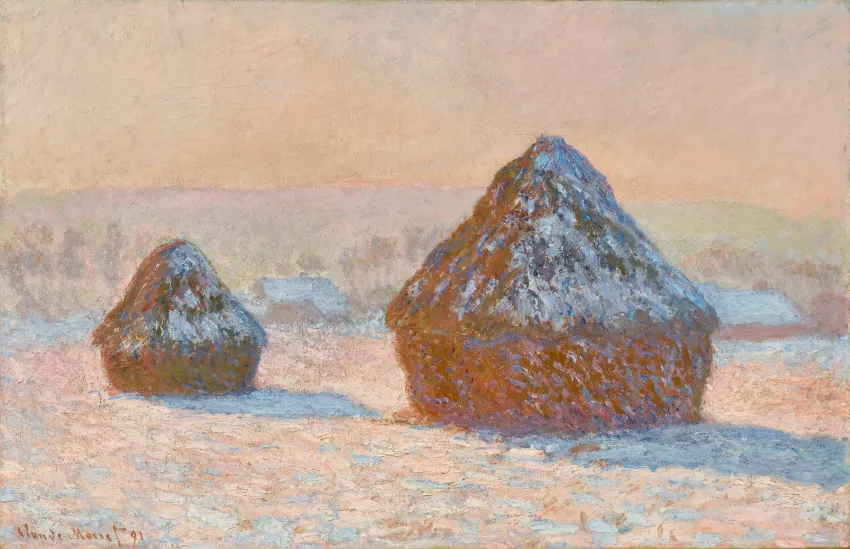
Wheatstacks, Snow Effect, Morning
The Wheatstacks series is considered Claude Monet's first series and a major artistic breakthrough. The painter used the same framing at different times of the day, observing atmospheric effects of light and variations in color. The 1891 exhibition was a commercial success. Three days after the opening, all the paintings sold for between 3,000 and 4,000 francs each. The painter's reputation was well established, and his success continued.
Wheatstacks, Snow Effect, Morning
Claude Monet , 1891 , oil on canvas , 65 × 100 cm , J. Paul Getty Museum, Los Angeles , © J. Paul Getty Trust
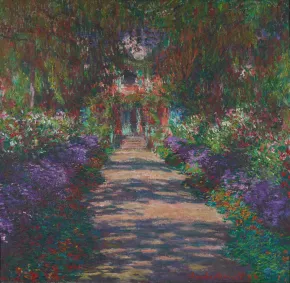
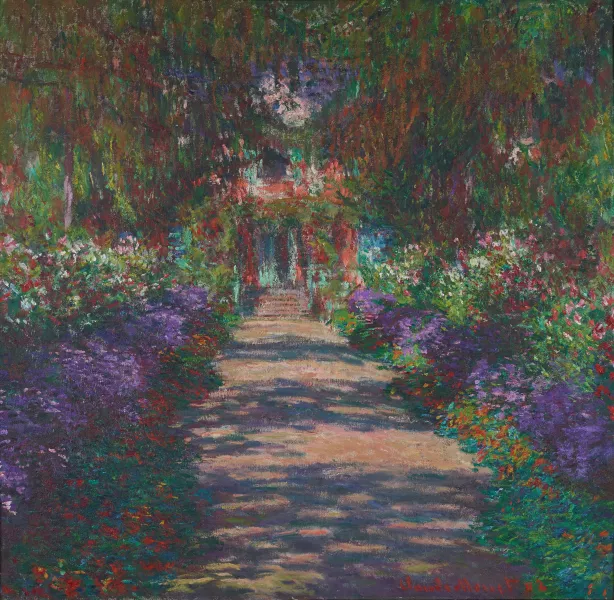
Path in Monet's garden in Giverny
Claude Monet lived in Giverny from 1883 to 1926, a total of forty-three years. When he moved there, the garden was almost non-existent, but he was the one who laid it out, and nothing could stop Monet. In 1893, he bought a plot of land on the other side of the road and obtained permission from the Eure prefect to feed his pond by diverting a branch of the Epte river! There was an outcry from the neighbors, who didn't take kindly to the operation and were worried that the exotic plants would pollute the surrounding area. The painter persuades them and holds firm - he will have his "water garden."
Path in Monet's garden in Giverny
Claude Monet , 1902 , huile sur toile , 90 × 92 cm , Österreichische Galerie Belvedere, Vienne , © Johannes Stoll
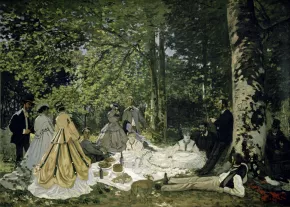
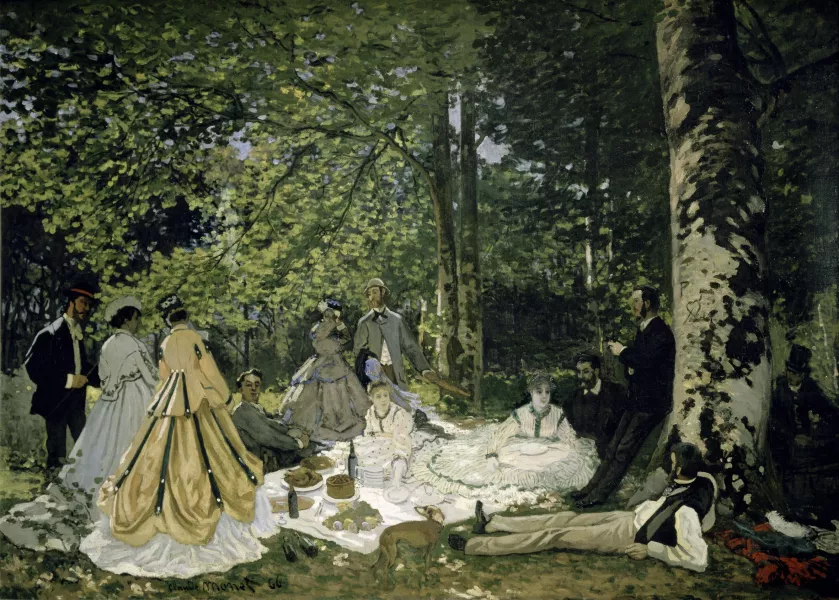
Luncheon on the Grass
Two years after the controversy created by Edouard Manet's The Luncheon on the Grass, Claude Monet also embarked on an eponymous canvas that is both a tribute and a challenge. The project was enormous. Indeed, the work would measure over four meters by six. While Manet shocked with his depiction of a female nude in the middle of a modern picnic, his disregard for the rules of perspective and depth, and by adopting a format usually reserved for mythological or historical scenes, Claude Monet proposed a more socially acceptable work. He retains the large format, but only depicts a simple picnic among friends, with no nude to provoke the viewer, but a treatment of free brushstrokes that already heralds the Impressionist style.
Luncheon on the Grass
Claude Monet , 1866 , oil on canvas , 130 × 181 cm , musée Pouchkine, Moscou , © Bridgeman Images
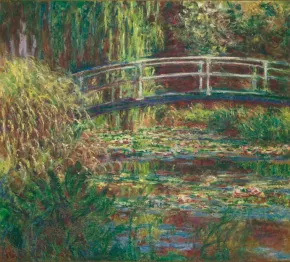
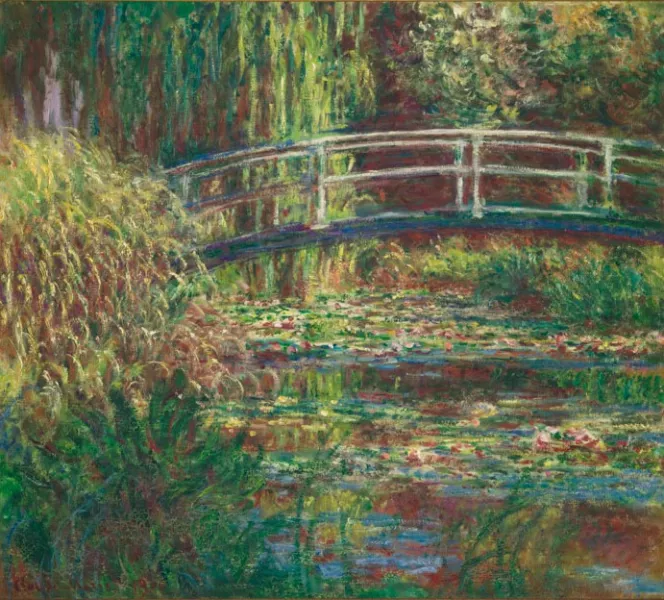
The Water Lily Pond, Pink Harmony
The garden at Giverny gave rise to two major motifs, the Japanese bridge and the water lilies. In 1893, when Monet had his pond built, he added a bridge. The arbour and wisteria came ten years later. The Japanese influence is reflected in the many plants the painter had planted. Bamboo, ginkgo biloba, Japanese tree peonies and weeping willows frame the pond. The sight of this enchanting bridge gives rise to a series of paintings, the last of which verge on abstraction - most likely due his double cataract. He was then operated for the double cataracts in 1922.
The Water Lily Pond, Pink Harmony
Claude Monet , 1900 , huile sur toile , 90 x 101 cm , musée d’Orsay, Paris , © GrandPalaisRmn (musée d'Orsay) / Hervé Lewandowski
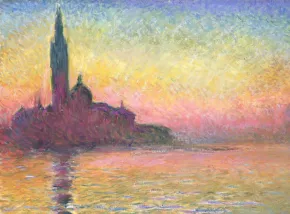
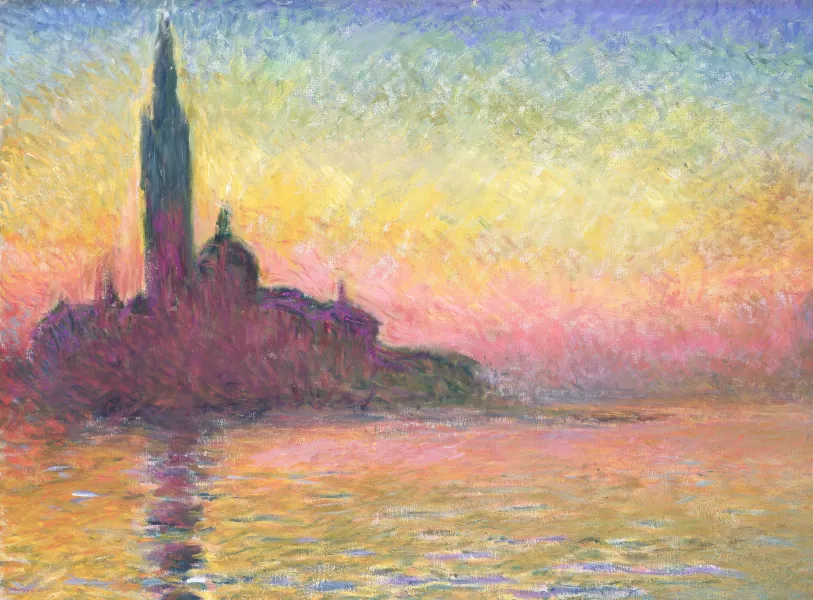
San Giorgio Maggiore by Twilight
It's surprising that Monet, a painter devoted to the reflection of water and light, didn't go to Venice until he was almost 70. Monet and his wife received an unexpected invitation from their friend Mary Young Hunter, an American they had met on their travels in London a few years earlier. She invited them to stay at her home in Venice, in the Palazzo Barbaro. The couple, now married, enjoyed being tourists. They were seen posing for the photographer in St. Mark's Square with pigeons on their heads and arms.
San Giorgio Maggiore by Twilight
Claude Monet , 1883 , oil on canvas , 65 x 81 cm , The Metropolitan Museum of Art, New York , © Bridgeman Images
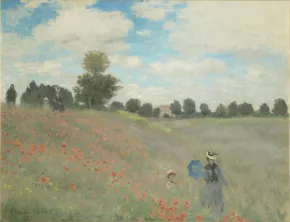
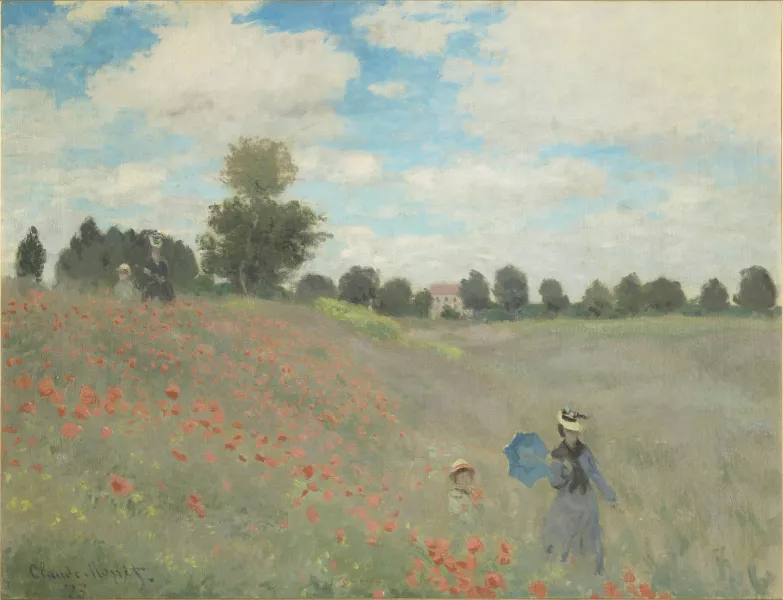
Poppies
Upon his return from England in 1871, Monet settled with his family in Argenteuil where he lived until 1878. These years were a period of blossoming. Monet was supported by the art dealer Paul Durand-Ruel whom he had just met, and life was less harsh in the suburbs, less expensive and more welcoming. Monet went to his Paris studio every day, but gradually developed a passion for the countryside around him. In full reconstruction after the war, the landscape was constantly evolving, allowing him to explore the possibilities of plein-air painting.
Poppies
Claude Monet , 1873 , oil on canvas , 50 x 65 cm , musée d’Orsay, Paris , © Musée d’Orsay, Dist. RMN-Grand Palais / Patrice Schmidt
Listen to the playlist of the exhibition
Explore more

Download our app
The application, available free of charge on iOS and Android, gives commentaries on the works of our current exhibitions. Discover through original anecdotes major works of the exhibition "Monet, founder of impressionism"
